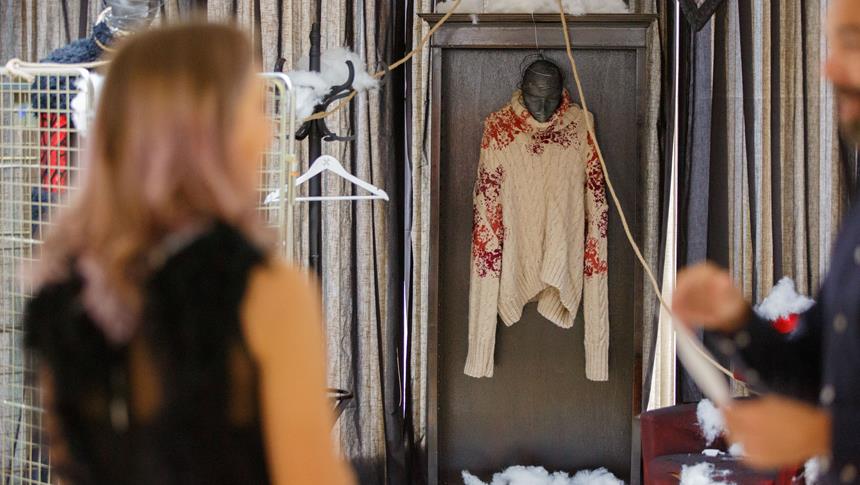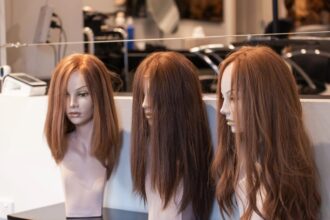Introduction to the Business of Fashion
The business of fashion is a vibrant world where creativity intertwines with commerce. It’s not just about the latest trends or who wore what on the red carpet; it’s an intricate ecosystem that drives economies and shapes cultures. From haute couture runways to bustling online shops, this industry presents endless opportunities for those ready to explore its depths.
Have you ever wondered how a simple sketch transforms into that must-have dress? Or how brands create buzz around their collections? The answers are as diverse as the styles themselves. Whether you’re dreaming of becoming a designer, marketing genius, or retail guru, understanding the mechanics behind fashion can set you on your path to success.
In this article, we’ll delve into all aspects of the business of fashion—from key players and market dynamics to career opportunities and essential tips for thriving in this fast-paced environment. Get ready to unravel the complexities of an industry that’s both an art form and a multi-billion-dollar enterprise!
How the Fashion Industry Works
The fashion industry operates like a finely tuned machine, where every cog plays a vital role. At its core, it transforms creative ideas into tangible products that reflect culture and trends.
Designers sketch concepts, inspired by everything from art to nature. These designs then flow through various stages of production. Sampling is crucial; prototypes are created and tested for market viability.
Manufacturers take over next, sourcing materials and labor to bring these designs to life. This phase often involves complex logistics to ensure quality and efficiency.
Retailers step in as the bridge between manufacturers and consumers. They curate collections that resonate with target audiences while managing inventory effectively.
Marketing teams craft narratives around brands, making them relatable and desirable. Social media has become an essential tool in this process, connecting directly with potential buyers on multiple platforms.
Each element interacts dynamically within the broader ecosystem of the business of fashion.
Key Players in the Fashion Industry
The fashion industry is a vibrant ecosystem filled with diverse key players. Designers are the creative visionaries, crafting unique collections that set trends. Their imagination shapes what we see on runways and in stores.
Manufacturers play a crucial role as well. They transform designs into tangible products, ensuring quality and efficiency in production processes.
Retailers bridge the gap between creators and consumers. From high-end boutiques to fast-fashion chains, they curate selections that appeal to various demographics.
Then there are marketers and PR professionals who amplify brand messages. They strategize campaigns that connect brands with their target audiences through social media, events, and advertisements.
Influencers wield significant power today. Their ability to sway public opinion can elevate brands overnight or shift consumer preferences dramatically. Each player contributes uniquely to this complex tapestry known as the business of fashion.
The Role of Designers and Creatives in Fashion
Designers and creatives are the heartbeat of the fashion industry. They bring visions to life, transforming ideas into tangible pieces that tell stories.
At the core, designers interpret cultural trends and societal shifts. Their work often reflects deeper meanings, connecting with consumers on an emotional level. Whether it’s haute couture or streetwear, every stitch has significance.
Creatives also collaborate closely with marketing teams to ensure their designs resonate in a crowded marketplace. This synergy allows for innovative campaigns that bridge art and commerce.
Moreover, emerging technologies like 3D printing and virtual reality expand creative possibilities. Designers now explore new realms beyond traditional fabrics and silhouettes.
The role is not just about aesthetics; it’s about pushing boundaries. These visionaries challenge norms while setting the stage for future styles—making them indispensable in shaping what we wear today and tomorrow.
The Business Side of Fashion: Marketing, PR, and Branding
The business of fashion thrives on powerful marketing strategies. Brands must craft compelling narratives that resonate with consumers. Storytelling elevates a brand’s image, transforming it from mere clothing into an experience.
Public relations play a pivotal role in shaping perceptions. Fashion houses rely on PR professionals to create buzz around new collections and collaborations. This is where media relations come into play, ensuring coverage in magazines and online platforms.
Branding is more than just a logo; it’s about identity. Successful brands establish a distinct voice that sets them apart in a crowded marketplace. They cultivate loyalty through consistency and engagement with their audience.
Digital marketing has revolutionized the industry, allowing for targeted campaigns that reach specific demographics effortlessly. Social media platforms serve as vital tools for interaction, enabling direct communication between brands and customers.
Navigating this landscape requires creativity alongside analytical skills to measure success effectively.
Retail and E-commerce in the Fashion Industry
Retail and e-commerce have transformed the business of fashion. Brick-and-mortar stores are still vital, but online shopping is reshaping consumer habits.
With just a click, shoppers can access global brands and local boutiques alike. This convenience drives competition among retailers to innovate their offerings continuously.
Many fashion brands now blend physical presence with digital experiences. Pop-up shops create buzz while also boosting brand visibility in markets that matter most.
E-commerce platforms utilize advanced technology like AI for personalized shopping experiences. Virtual try-ons enhance customer satisfaction by reducing return rates.
Social media plays a crucial role too. Influencers showcase products, turning followers into loyal customers almost overnight.
Sustainability has become a priority for both retail and e-commerce segments. Brands are responding with eco-friendly practices that resonate with today’s conscious consumers, creating new market opportunities within the industry landscape.
Career Opportunities in the Business of Fashion
The business of fashion offers a myriad of career opportunities for passionate individuals. From creative roles like fashion design and styling to analytical positions in merchandising, the options are vast.
Marketing professionals play a crucial role in shaping brand identity. They craft campaigns that resonate with consumers. Meanwhile, public relations experts build relationships between brands and the media, ensuring visibility.
E-commerce specialists focus on online retail strategies. Their work drives sales through digital platforms, making them vital as shopping habits evolve.
For those interested in management, roles such as product development or supply chain management provide insight into operational aspects. These positions ensure that designs reach consumers efficiently.
Internships also serve as gateways into this dynamic industry. They offer hands-on experience while networking with established professionals can open many doors to future careers in the business of fashion.
Tips for Success in the World of Fashion Business of fashion
Stay curious. The fashion landscape is always changing, with new trends emerging constantly. Embrace change and adapt quickly.
Networking is essential. Build relationships with industry professionals, attend events, and engage on social media platforms. Connections can lead to opportunities that you never expected.
Develop a strong personal brand. Your unique perspective sets you apart in the competitive world of fashion business of fashion. Showcase your style and vision through various channels.
Stay organized and manage your time effectively. A well-structured approach will help you juggle multiple projects without compromising quality.
Cultivate resilience. Rejection is common in this field; learn from setbacks rather than being discouraged by them.
Keep an eye on the numbers as well as creativity; understanding finance will give you an edge over competitors who focus solely on aesthetics or design alone.
Conclusion
The business of fashion is a vibrant and multifaceted industry that encompasses creativity, strategy, and innovation. From the intricate designs crafted by talented designers to the branding efforts that capture consumer attention, each aspect plays a vital role in shaping trends and driving sales.
Understanding how the fashion industry operates can open doors to various career opportunities. Whether you’re interested in design, marketing, or retail management, there’s a niche for you within this dynamic field.
Success doesn’t come easy; it demands dedication and adaptability. Staying updated with trends, embracing technology like e-commerce platforms, and building strong networks are crucial strategies for anyone aspiring to thrive in this competitive landscape.
As you navigate through your journey in the business of fashion, remember that passion fuels creativity while smart business practices pave the way for sustainable growth. Embrace every challenge as an opportunity to learn and evolve within this ever-changing realm.

















